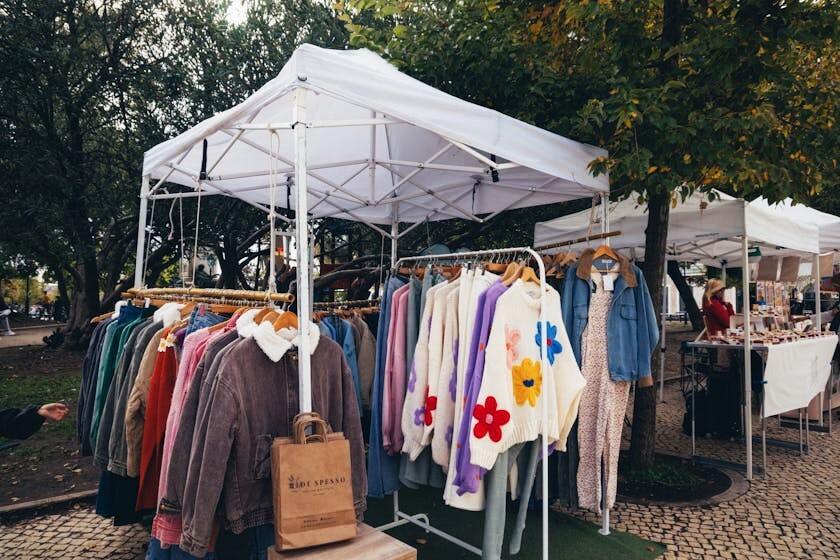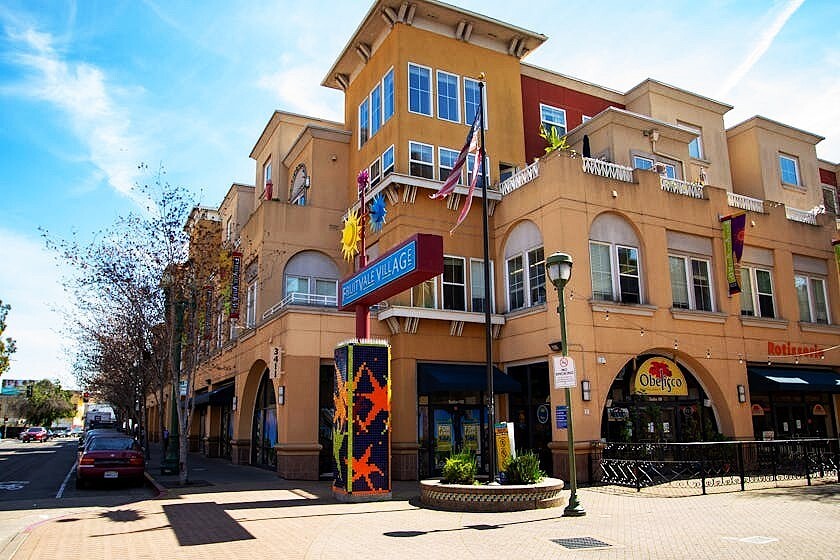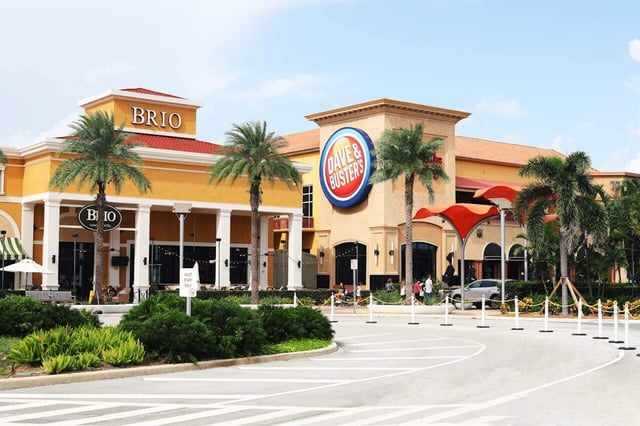How Experiential Retail Redefines Shopping For A New Generation
September 17th, 2025
5 min read

Gen Z is turning retail into immersive, meaningful spaces rather than simple storefronts. They value experiences that reflect their identity, foster social connection, and serve a purpose. Retail properties that support pop-ups, interactive environments, local artist collaborations, and lifestyle-centric design can attract more traffic, longer visits, and stronger tenant demand.
Forget everything you thought you knew about the future of retail. Gen Z is rewriting the rules, and the shopping center is their new canvas.
For years, headlines predicted the death of brick-and-mortar retail. But instead of collapsing, it adapted. E-commerce may have changed the game, but retail has rewritten the rules.
Today’s most successful spaces aren’t just places to shop. They’re vibrant destinations built to engage, connect, and inspire. Think of them less as warehouses and more as community theaters —spaces where brands perform, and the audience becomes part of the story.
Gen Z is leading this change, seeking more than just a transaction. They want retail to embody their lifestyle, values, and yearning for meaningful connections.
From Transactions To Experiences: The Expectations Of A New Generation
To understand where retail is going, it helps to understand who is steering the wheel. Gen Z, along with Millennials, is reshaping the definition of value in retail. For these younger consumers, shopping isn’t simply about acquiring goods. It’s about the experience that comes with it.
Where previous generations may have prioritized convenience or price alone, today’s younger shoppers are looking for something more immersive, meaningful, and socially relevant.
What Gen Z And Millennials Value In Retail
Several core traits define the retail preferences of these demographics:
Experience Over Ownership
These consumers increasingly prefer memorable experiences over material possessions. A product tied to a unique moment or activation holds greater appeal than one pulled from a standard shelf.
Shopping for them is more like collecting memories than collecting things. They’re doing more than just buying a candle. They’re remembering how it smelled while they created it themselves at an in-store workshop.
Social Sharing And Community
Shopping is often a shared experience, both in person and online. Environments that are visually engaging, interactive, or unexpected encourage visitors to document and share their visits across social platforms.
Retail has become part gallery, part stage. If it’s not worth posting to their stories, it may not be worth the visit. Instagrammable walls, pop-up art, or branded installations have become the modern-day equivalent of storefront windows.
Values-Driven Engagement
Brands that reflect social, environmental, and cultural values resonate more deeply. Consumers want to feel that their purchases align with their identities and beliefs.
They view their spending like casting a vote. Supporting a local artist collaboration or shopping from a sustainable brand isn’t just a purchase; it's a meaningful act. It’s a personal statement.
In short, Gen Z and Millennials are not just spending money. They are making statements. And they expect retail spaces to support that goal.
Experiential Retail: A Strategic Response To Changing Expectations
Retailers and property owners alike are adapting to these shifts by reimagining physical space. They are no longer focused solely on sales floors, but on building environments that support experience.
Experiential retail prioritizes interaction, emotion, and connection. This model not only complements online shopping but also enhances it. It offers something digital commerce cannot replicate.
Let’s examine how experiential retail is unfolding in real-world settings.
1. Pop-Up Shops: Short-Term, High-Impact Engagement
Pop-up shops offer a compelling blend of urgency and novelty. These short-term retail activations are designed to generate buzz and drive immediate foot traffic. They are often centered around limited-time products or immersive brand storytelling.
Pop-ups appeal to Gen Z’s desire for limited-edition experiences and content worth capturing.
Example: A skincare brand launches a three-day pop-up inside a suburban shopping center. Visitors can receive personalized consultations, build their own skincare formulas, and enjoy a curated, photogenic environment designed for social media.
2. Artisan Markets And Community Events: The New Town Square
Experiential retail isn’t limited to individual stores. Increasingly, entire shopping centers are being repositioned as community gathering places. These spaces host events that attract locals and encourage meaningful engagement.
Events like these foster emotional attachment to a place and encourage repeat visits.
Example: A regional center transforms its parking lot into a weekend artisan market, featuring local makers, food trucks, live music, and art installations. While attendees may not have come for retail, the experience naturally drives traffic to surrounding tenants.
3. Interactive Store Concepts: Participants As A Value Add
Within individual stores, brands are enhancing the in-person experience through interactive features that invite shoppers to test, play, and personalize their products.
These experiences transform the act of shopping from a task into a form of entertainment. They also create opportunities for deeper brand engagement.
Example: A sneaker retailer installs an in-store basketball court for customers to try on shoes in action. A beauty brand offers an immersive fragrance lab where guests can create their own scent blends.
4. Limited-Edition Collaborations: Retail As A Cultural Moment
Today’s consumers respond strongly to exclusivity and storytelling. Limited-edition drops and brand collaborations provide a way for retailers to tap into both.
This type of retail experience blurs the line between commerce and culture. It drives both immediate sales and long-term brand equity.
Example: A national apparel brand partners with a local muralist for an in-store event. The activation launches a co-branded clothing capsule, accompanied by a live painting session and DJ set. The collection is available only at that location and only for one weekend.
Why This Matters To Retail Real Estate Investors
For commercial real estate investors, the rise of experiential retail is more than a cultural shift. It presents a business opportunity with clear and measurable benefits.
Key Benefits For Property Owners And Investors
- Increased Foot Traffic - Activations, events, and experiences attract visitors who might otherwise bypass a center. This drives stronger overall traffic.
- Longer Dwell Time - Shoppers who attend events or explore unique experiences tend to stay longer, and they are more likely to spend.
- Stronger Tenant Demand and Retention - Innovative tenants actively seek properties that support creative retail formats. Investors who offer flexibility and support for experiential activations can attract higher-value tenants.
- Resilient Asset Positioning - Properties that embrace adaptability are better positioned to meet evolving consumer expectations and market shifts.
This shift reframes the role of the retail property owner. Success now depends not only on occupancy, but also on the ability to support dynamic and engaging tenant strategies.
Want more insights on how shopping center strategies are evolving? Visit our Learning Center for additional resources tailored to new and aspiring retail investors and our YouTube channel, The Shopping Center channel, for comprehensive concept breakdowns and behind-the-scenes videos.
What New Investors Should Watch For
For those just entering the commercial retail space, understanding the signals of an experience-ready property can help inform better investment decisions.
Four Key Signals Of An Experience-Ready Retail Asset
- Adaptable Common Areas - Properties with open plazas, courtyards, or flexible parking areas offer ideal spaces for events and pop-ups.
- Local Brand and Artist Involvement - Centers that feature tenants engaged with the local creative community tend to attract more organic foot traffic.
- Supportive Infrastructure - Features such as modular interiors, adequate electrical systems, and zoning flexibility allow for easy event setup and quick conversions.
- Experience-Friendly Demographics - Retail located near colleges, walkable urban areas, or growing millennial and Gen Z populations is better suited to benefit from experiential trends.
As retail continues to shift, these attributes will increasingly define which properties are best positioned for growth.
Retail's Next Chapter Is Already Underway
The evolution of retail isn’t coming. It’s already here. What we’re seeing isn’t the end of physical retail but a shift in its purpose. Shopping centers are no longer just places to make purchases. They’re becoming destinations where people gather, connect, and engage with brands in meaningful ways.
For investors, this is more than a trend to watch. It’s an opportunity to help shape what comes next. Supporting experiential retail is about creating places where people want to spend their time, not just stop in and leave.
This model isn’t temporary. It reflects a lasting change in how people experience space, community, and commerce. Investors who adapt early won’t just stay relevant. They’ll lead the way into retail’s next era.
Topics:


























